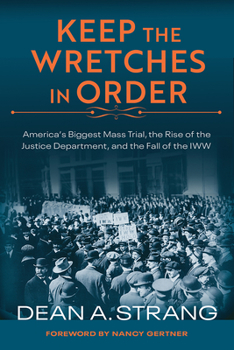Keep the Wretches in Order: America's Biggest Mass Trial, the Rise of the Justice Department, and the Fall of the Iww
Select Format
Select Condition 
Book Overview
Before World War I, the government reaction to labor dissent had been local, ad hoc, and quasi-military. Sheriffs, mayors, or governors would deputize strikebreakers or call out the state militia, usually at the bidding of employers. When the United States entered the conflict in 1917, government and industry feared that strikes would endanger war production; a more coordinated, national strategy would be necessary. To prevent stoppages, the Department...
Format:Hardcover
Language:English
ISBN:0299323307
ISBN13:9780299323301
Release Date:June 2019
Publisher:University of Wisconsin Press
Length:344 Pages
Weight:1.44 lbs.
Dimensions:1.1" x 6.1" x 9.1"
Customer Reviews
0 rating





